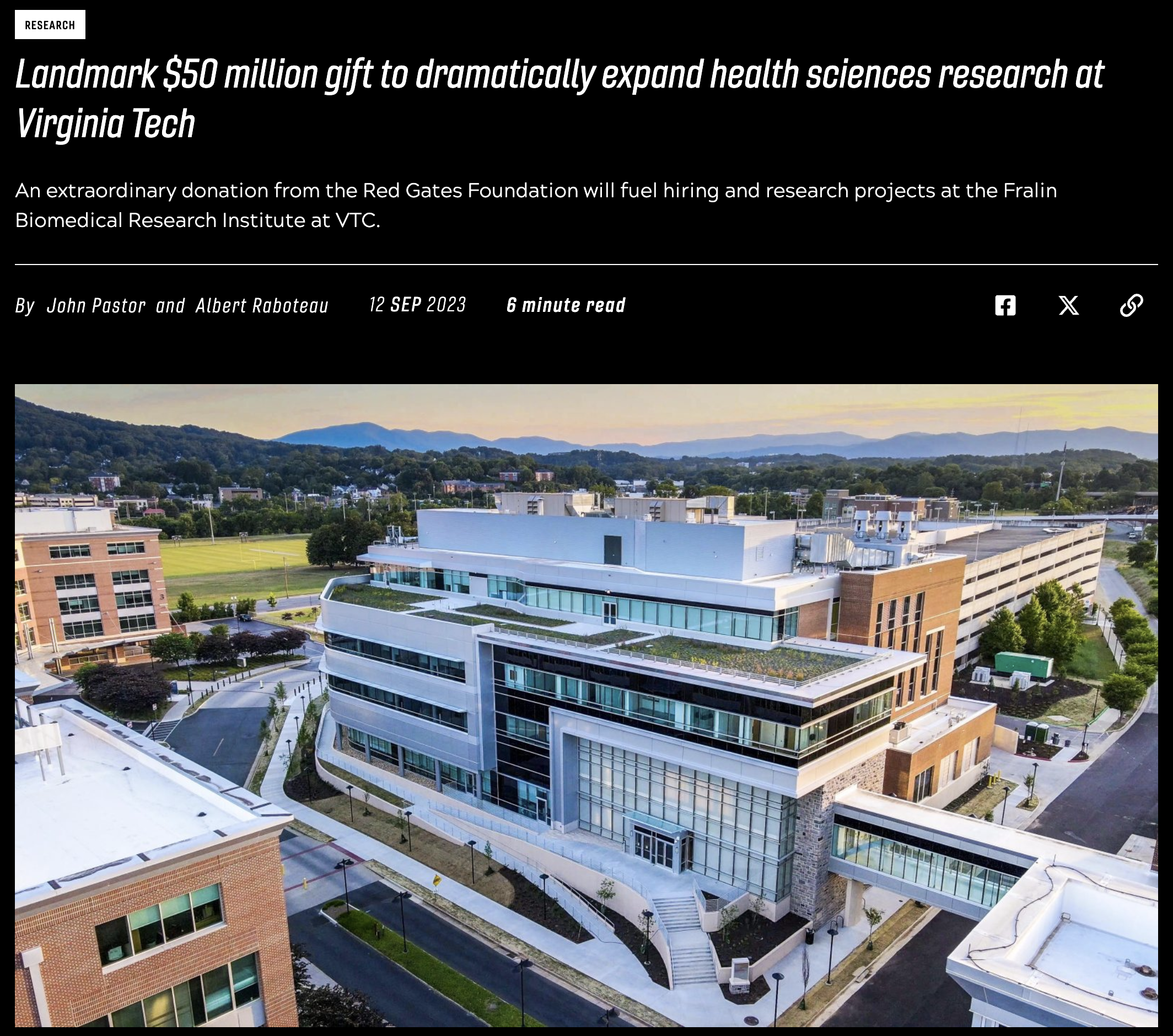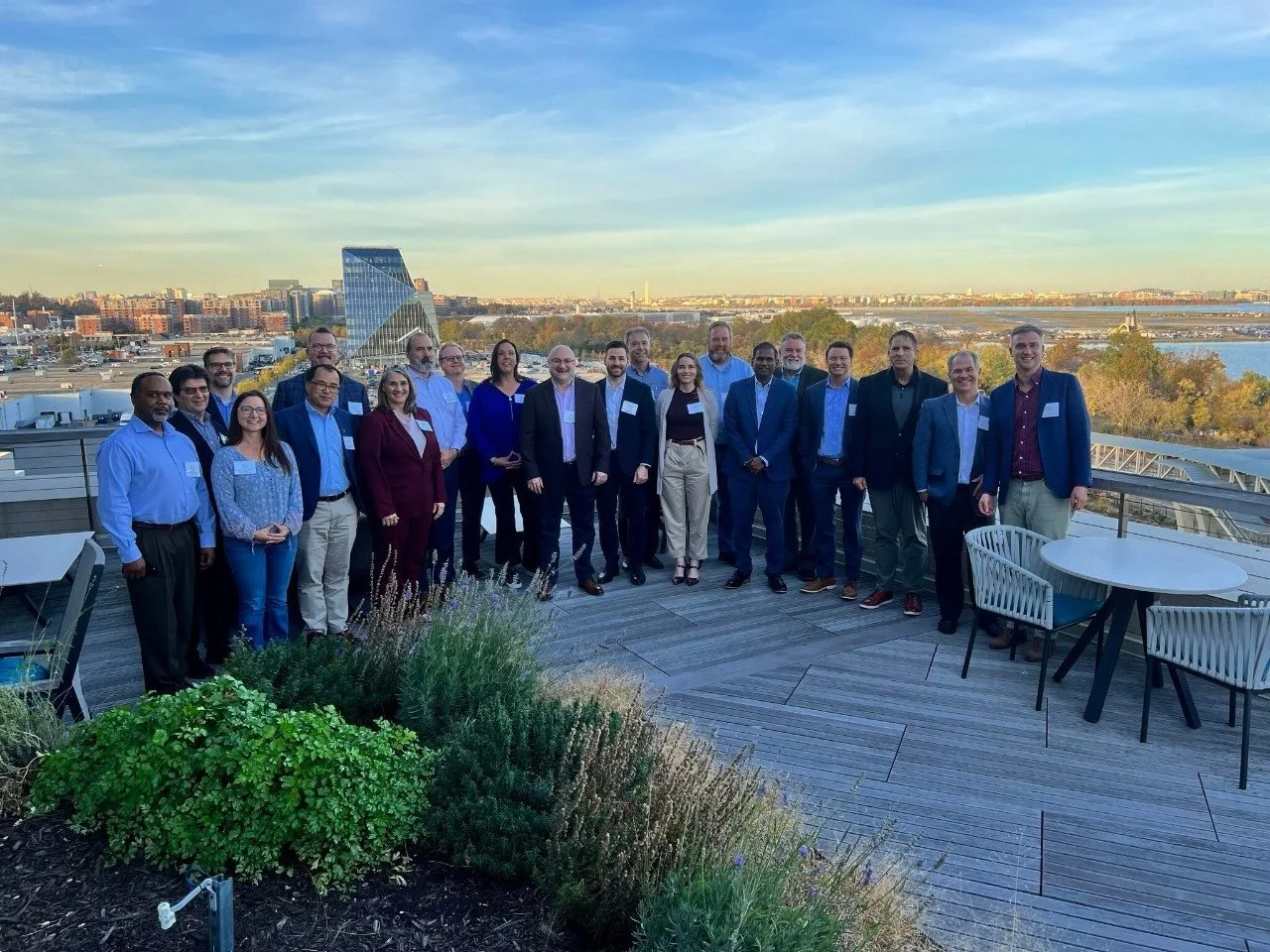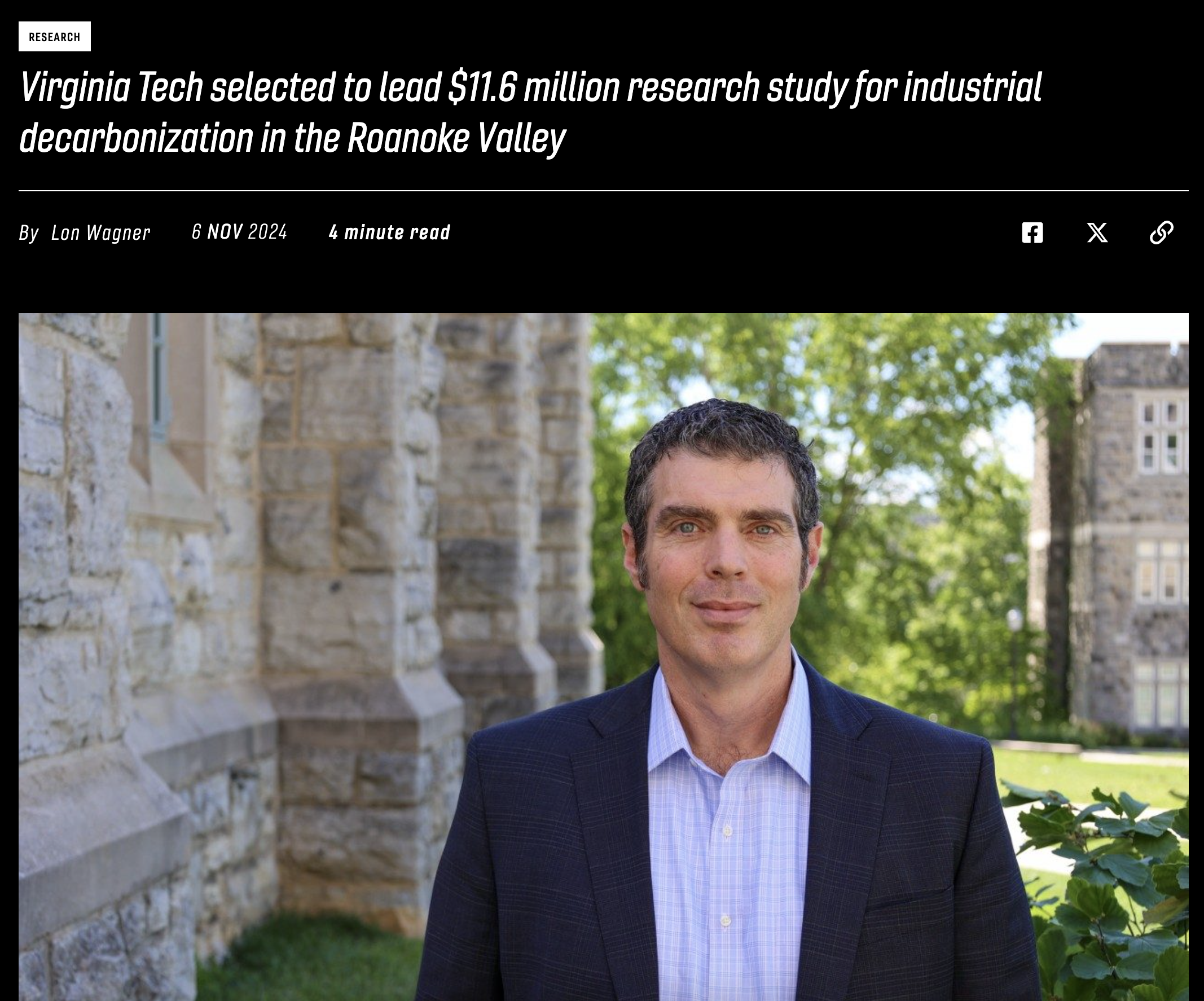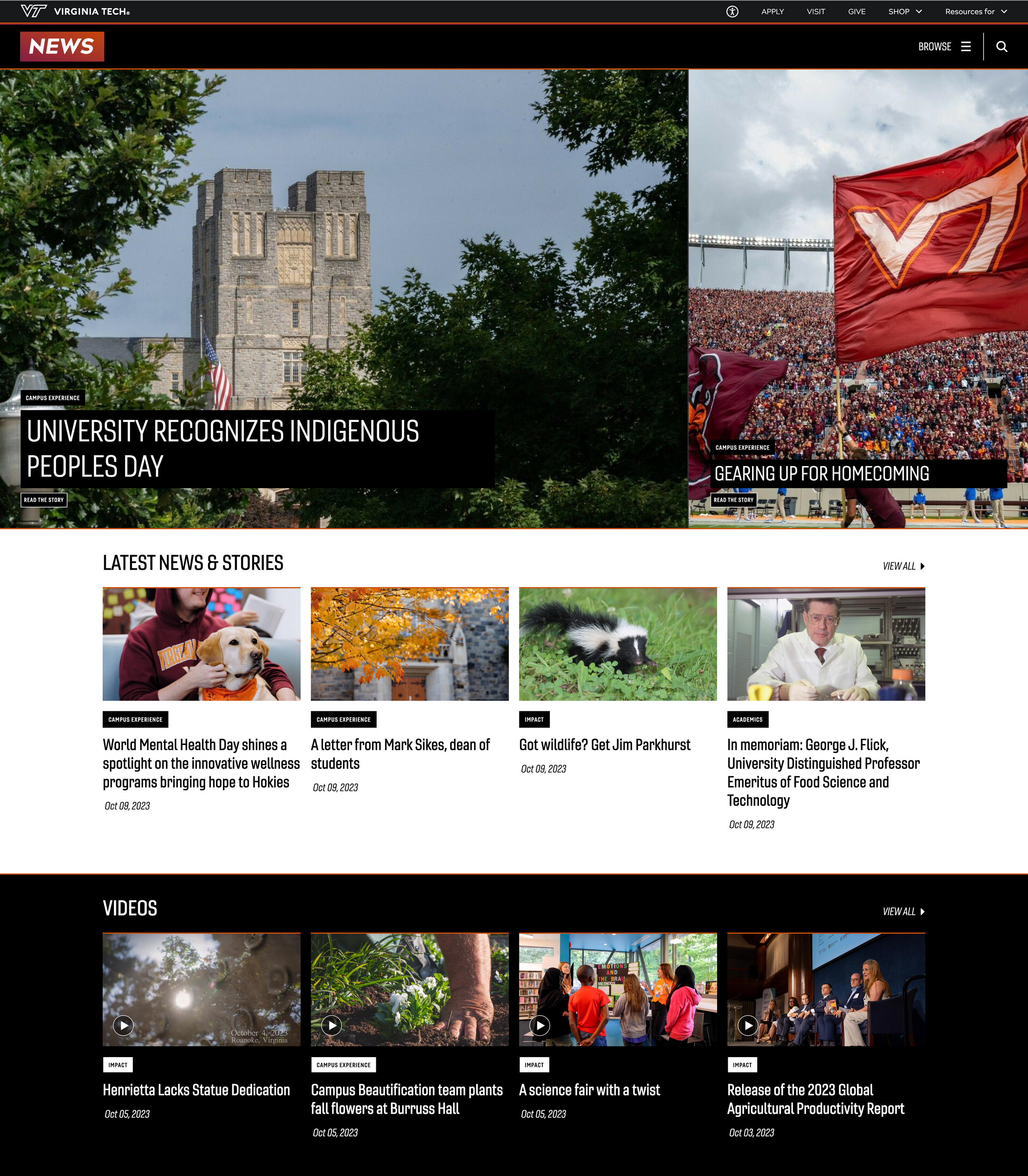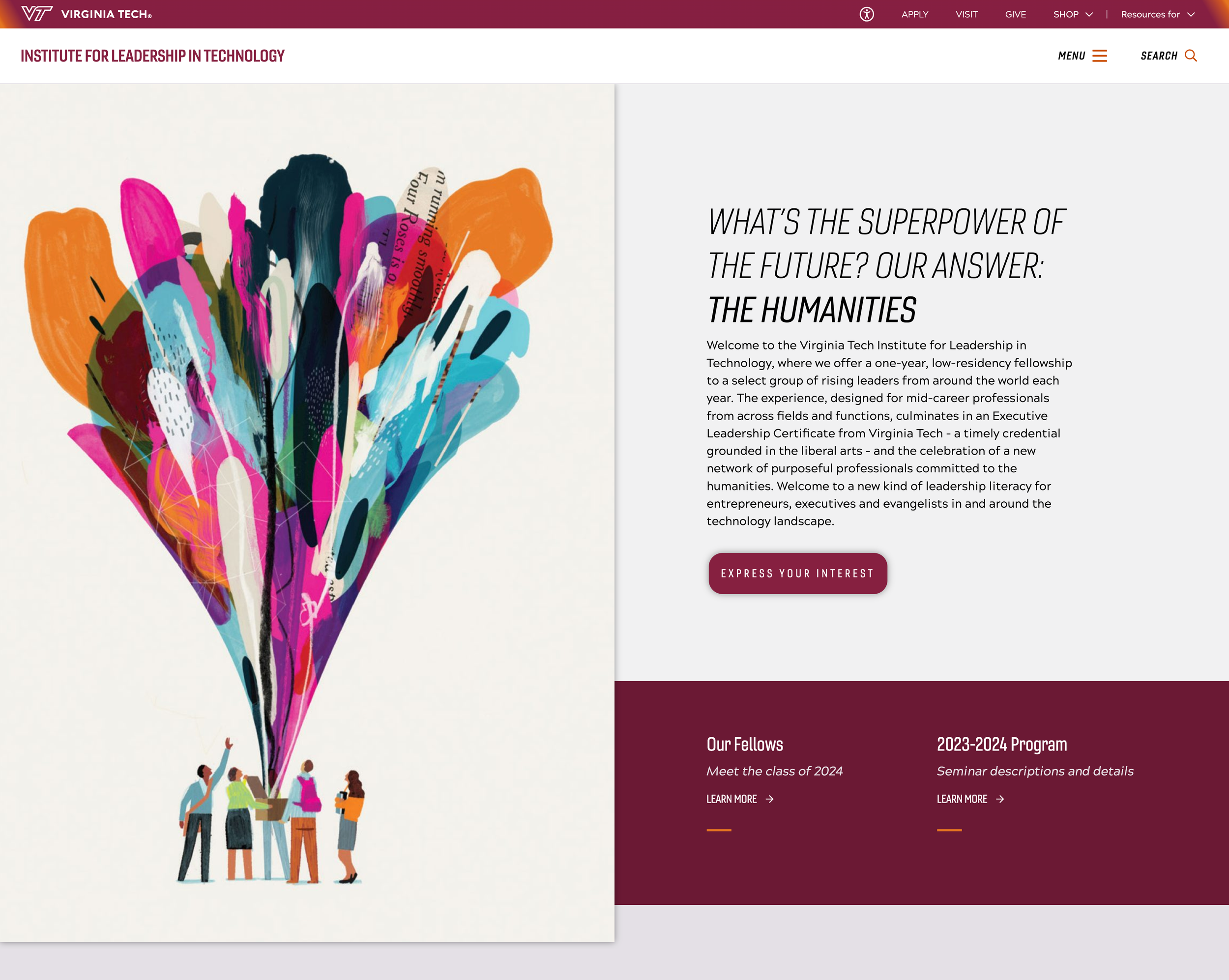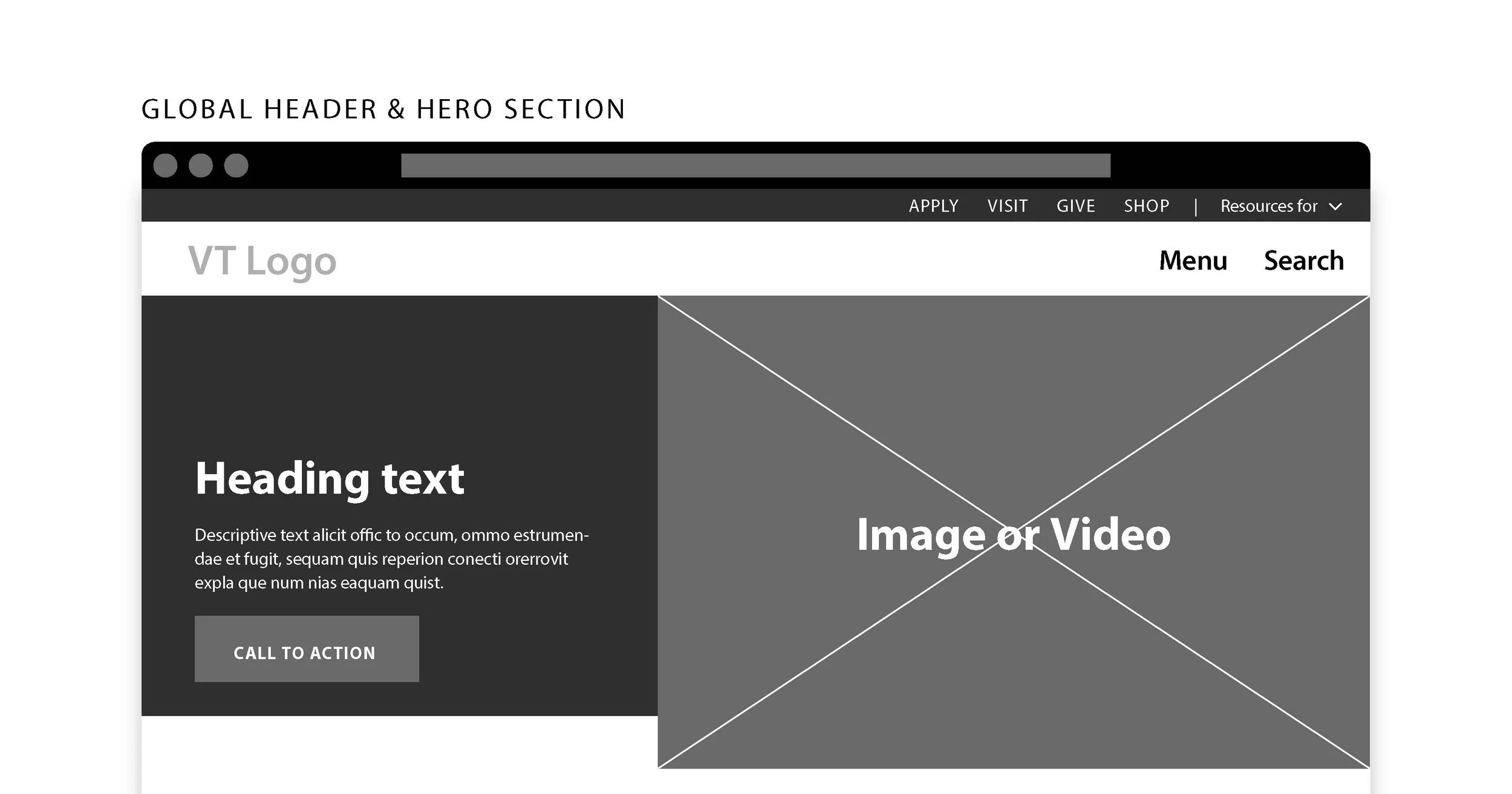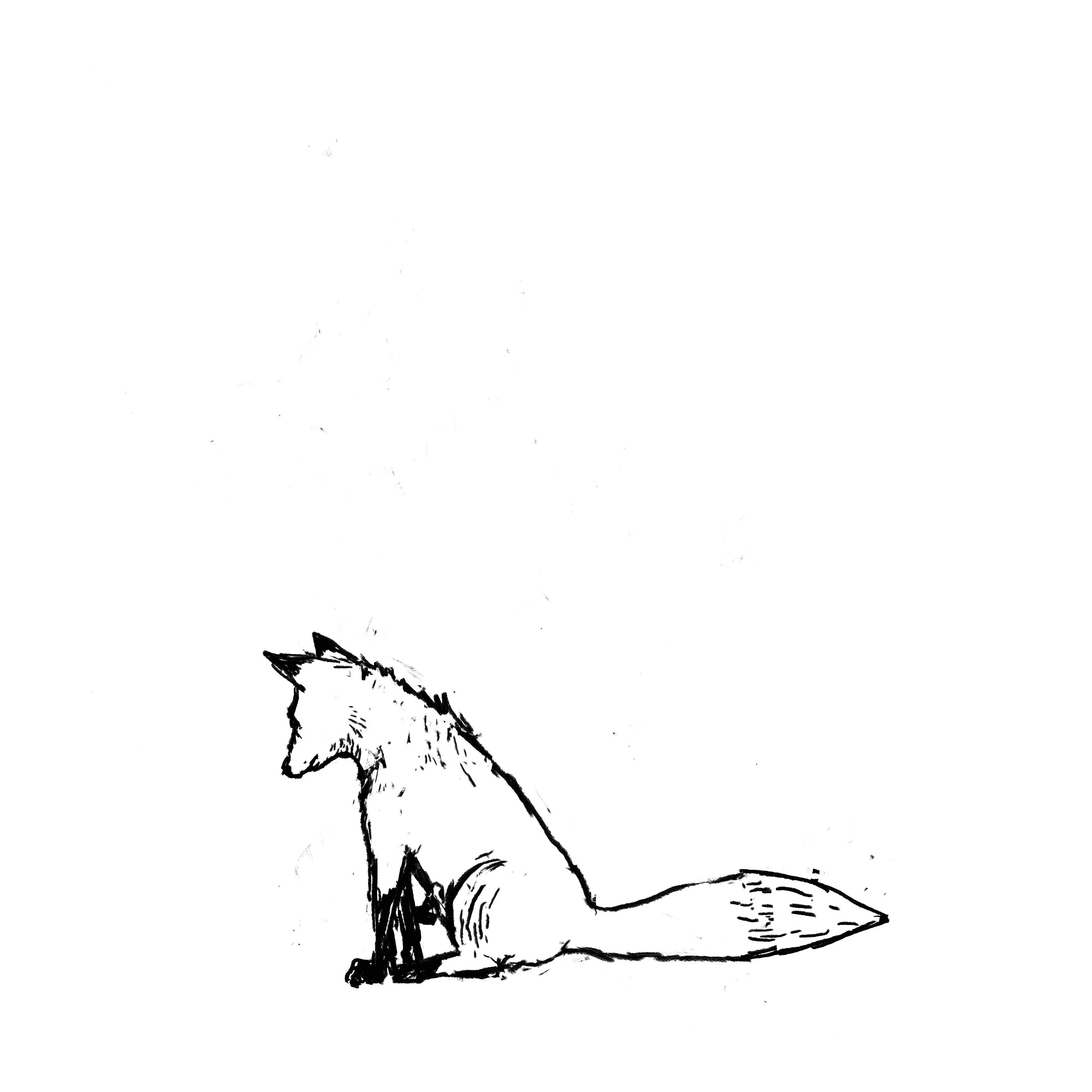Creative leader
Over the last ten years I have grown my career at Virginia Tech. I started as a web designer and progressed into leadership roles managing the brand, digital expression, and strategic efforts to advance the university forward. Today I lead a team focused on philanthropy and partnerships. Below are some highlights and descriptions of some of the biggest efforts.
Building a new creative studio
In March of 2023, I was charged with building a new team at Virginia Tech to focus creative efforts on two audiences in Advancement: principal donors, and company partners. The goal was to produce all marketing and creative material to help engage with, cultivate, and partner with this important group. In the last two years, the creative studio helped produce material to raise millions in philanthropy across several areas.
In the last two years I have recruited and built a team of 8 to tackle writing, design, web development and project management. Each of these examples represent collaborative efforts that benefited from strong branding, marketing, and creative work.
Atlas of AI Summit
Responding to the emerging omnipresence of artificial intelligence, we created a summit to bring higher education together with industry and government to discuss the most pressing issues.
CHIPS for Virginia
To keep pace with on-shoring semiconductor technology, we convened partners across many sectors and created a new organization, the Virginia alliance for Semiconductor Technology.
Smart Construction
Addressing themes in advanced manufacturing, from sustainability to intelligent interfaces, I helped facilitate a roundtable discussion with partners about the future of smart construction.
Branding complex ideas
One exciting aspect of our work has been to help talented faculty tell their story to the world in relatable ways. One example was helping Dr. Ryan Pollyea describe his industrial decarbonization efforts to a broader audience. We created a brand and named his effort the Carbon CoLab, and we created a website, slide deck, and fundraising materials to help create new partnerships.
University Branding
In 2017 I helped Virginia Tech update its logo and brand platform. The process was highly collaborative. As the creative director I worked with a consultant for the design of the logo. The in-house team I supervised worked on the implementation, creating assets and materials for all our constituents. As the creative leader, I oversaw the process of engaging with the community, managing feedback, and implementing the new brand across the university.


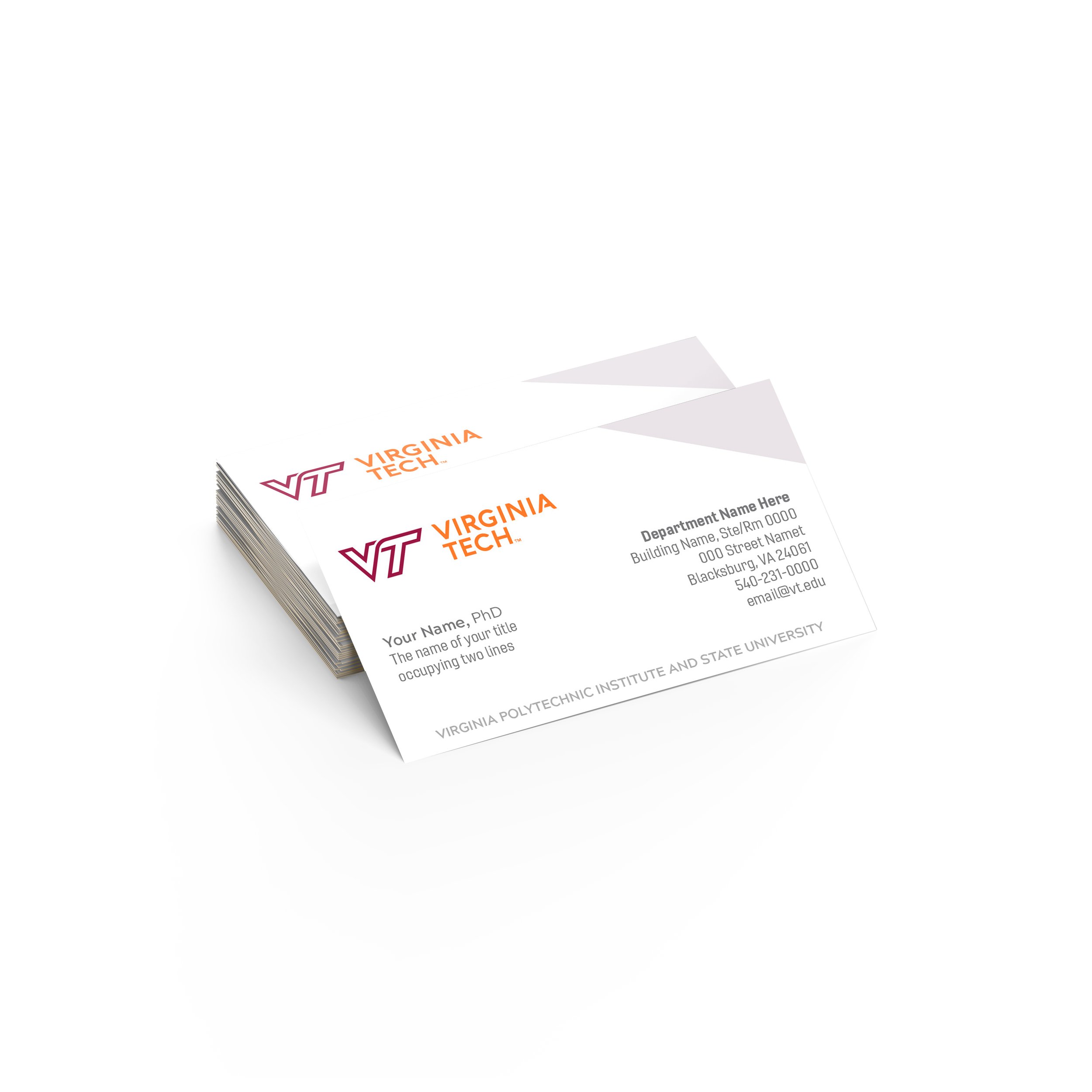
Creating a digital storytelling platform
With a huge variety of programs, initiatives, and academic areas, it was important to create a space where the story of Virginia Tech could be told. This website brings together events, stories, and videos featuring the impact of research and life at the university.
Bringing the Institute for Leadership in Technology to life online
As a cofounder of this institute, I created the website, and helped to visualize the mission, to bring the humanities into a new kind of leadership literacy. The institute is now in its second year and has welcomed fellows from Amazon, Boeing, Microsoft, TikTok, and the New York Times, as well as several authors and entrepreneurs.
Enterprise theme design
To bring the brand to life online, we created a custom theme for Adobe Experience Manager, which houses hundreds of websites across Virginia Tech, including vt.edu. I served as the product owner, managing a team of designers and developers to create the front-end experience.
You can see great examples of the theme in action across the university, like in the School of Performing Arts or the Institute for Creativity and Technology.
Product design process
Leading creative and digital teams for me is a balance of focus on both execution and workflow. With experience and access to workshops like the Section School, the team and I learned the value of a product mindset, rather than a project mindset. Projects are about output, where as products are about outcomes.
-
The best digital products start with the customer. A strong influence for me as a leader was Marty Cagan’s book “Inspired,” about building great product teams. After reading it, we thought a lot about how to avoid waterfall traps, and to tackle risks up-front. It’s all about solving problems, not implementing solutions.
-
One thing I have learned is to consider accessibility first, and to work inside those boundaries. Digital interfaces should be considerate of all the users interacting with them. By adhering to a few testing processes, and the right starting points, we have been able to create a web experience is easy to use no matter how you browse the web.
-
The great thing about design for digital products, is it’s relatively easy to test. With analytics and user feedback we were able to see what was working with the theme, and what wasn’t. Design should be an experiment to see what works, rather than a final expression.
-
No matter how great the interface is, the important part of the web experience, especially for our audiences, is the content. We focused on video in our news and storytelling website, and created a video player than syncs with YouTube to deliver unique ways of telling Virginia Tech’s story.
Through the Section School, I led a cohort of designers, developers, and content producers in a course with Sara Beckman, where we learned the phases of Customer-Centered Innovation. The four steps in this diagram show how you start by understanding the customer’s “job-to-be-done,” then reframe your thinking before designing and testing.
Reaching audiences
Over the last few years, Virginia Tech has done targeted advertising in order to grow awareness of the university’s presence in the greater Washington D.C. Area. Ads like the ones here will point back to a collection of stories about our global impact, all written by our network of communicators.
Focusing on philanthropy
Each year a collaborative group of fundraisers, communicators, designers and developers come together to create Giving Day at Virginia Tech. In my time leading creative teams, we assembled direct email campaigns, and social media advertising to draw audiences to our website for 24 hours of giving. The last giving day resulted in more than 24,000 donors and $21,237,006 raised.
Advertising for the
Tech Talent Pipeline
In 2018, Virginia Tech announced plans to build a $1 Billion campus in Alexandria, thanks to a proposal that led to Amazon’s expansion in that area. In the last 5 years, I have led efforts to create ads, and build a digital presence for Virginia Tech’s Innovation Campus, in order to help grow the talent pipeline for the region’s emerging tech ecosystem.
Working collaboratively with a creative agency, we created a brand for the new campus, and continue to develop messaging and content for fundraising now that the building has opened.
Art direction
Drawing on my experience with illustration, I have had the opportunity to art director several projects at Virginia Tech. There are many talented designers and photographers in communications and marketing, but now and then as we tell a particular story, it helps to use the work of a professional illustrator.
Illustration by Andrea Ucini
Illustration by MUTI
Illustration by Lauren Tamaki
Illustration by Keith Negley
Drawing, art history, and philosophy
I was lucky to study art history, theory, and criticism at the School of the Art Institute of Chicago. While I went there to study drawing and painting, I discovered art history and philosophy, which challenged my perspective and helped me see things differently.
I had the great fortune of studying illustration at the School of Visual Arts in New York, and received my MFA in Illustration as Visual Essay. The experience of keeping a studio with a talented group of artists is profound enough, but I also had the chance to study with the amazing stable of faculty there, including Marshall Arisman. After graduating, I took on freelance projects for a few years. While I have transitioned to different endeavors, I still feel that drawing is fundamental to who I am.
You can see some examples of more creative digital work through Fou Magazine, an online poetry journal that I illustrated and designed.

